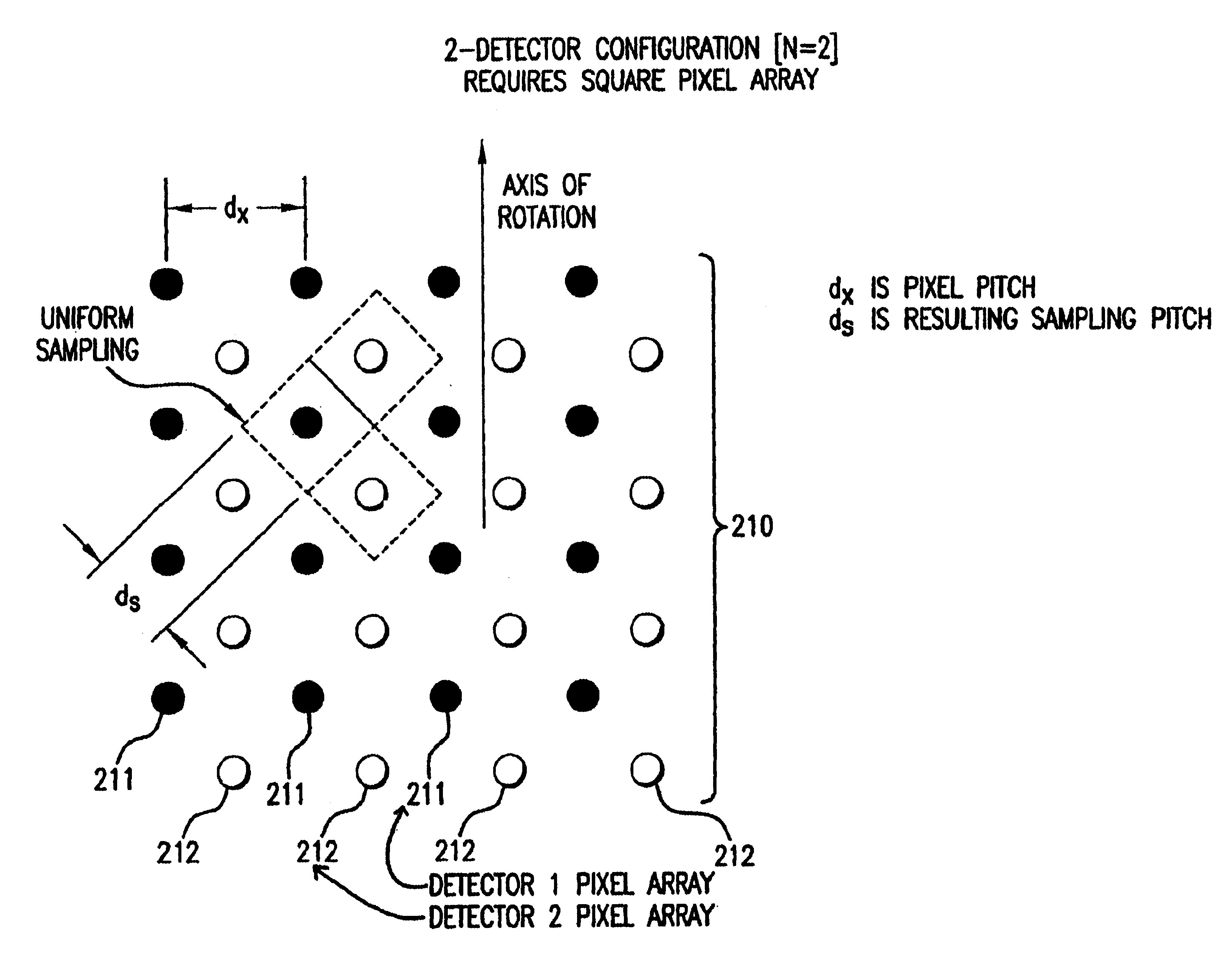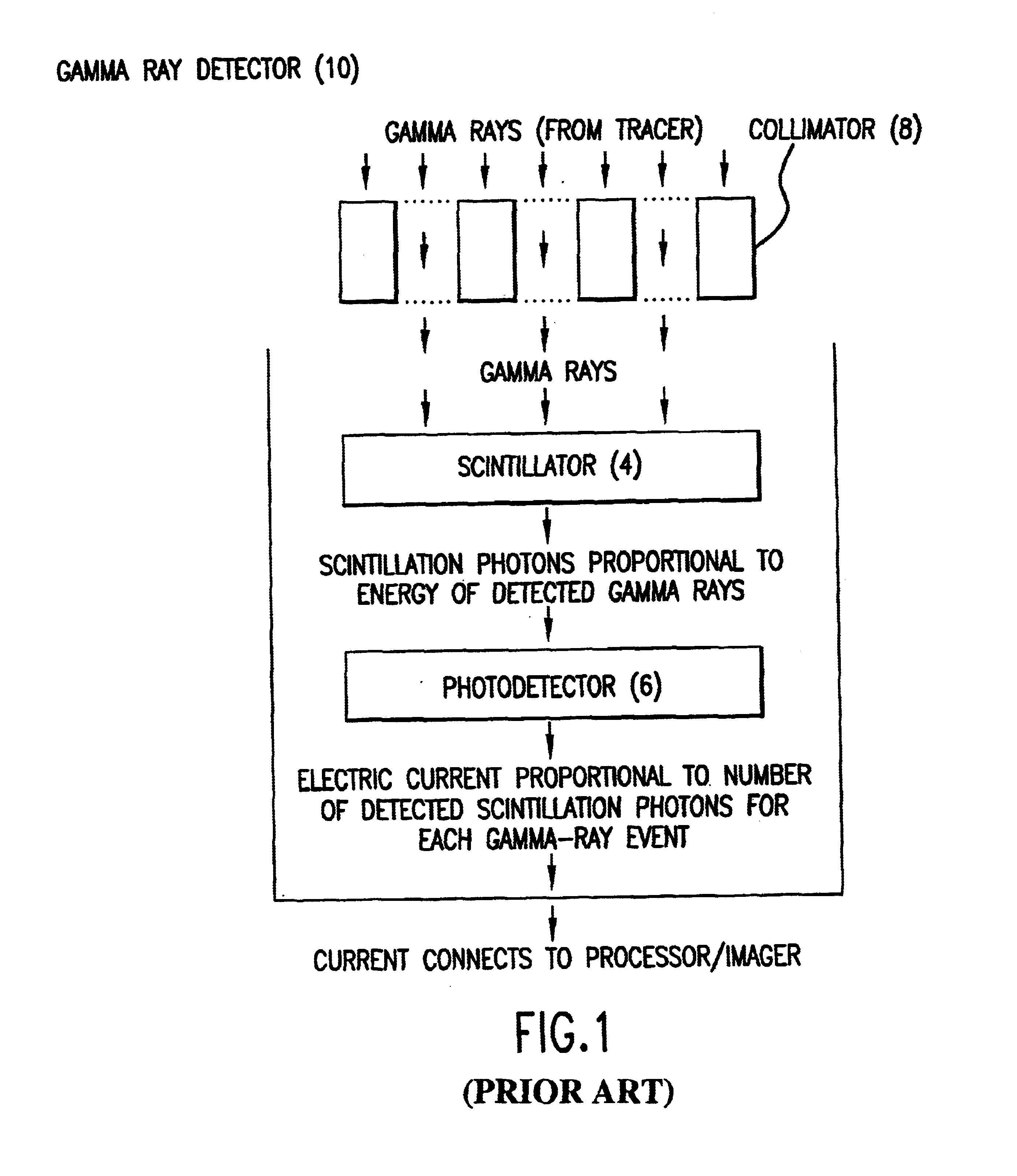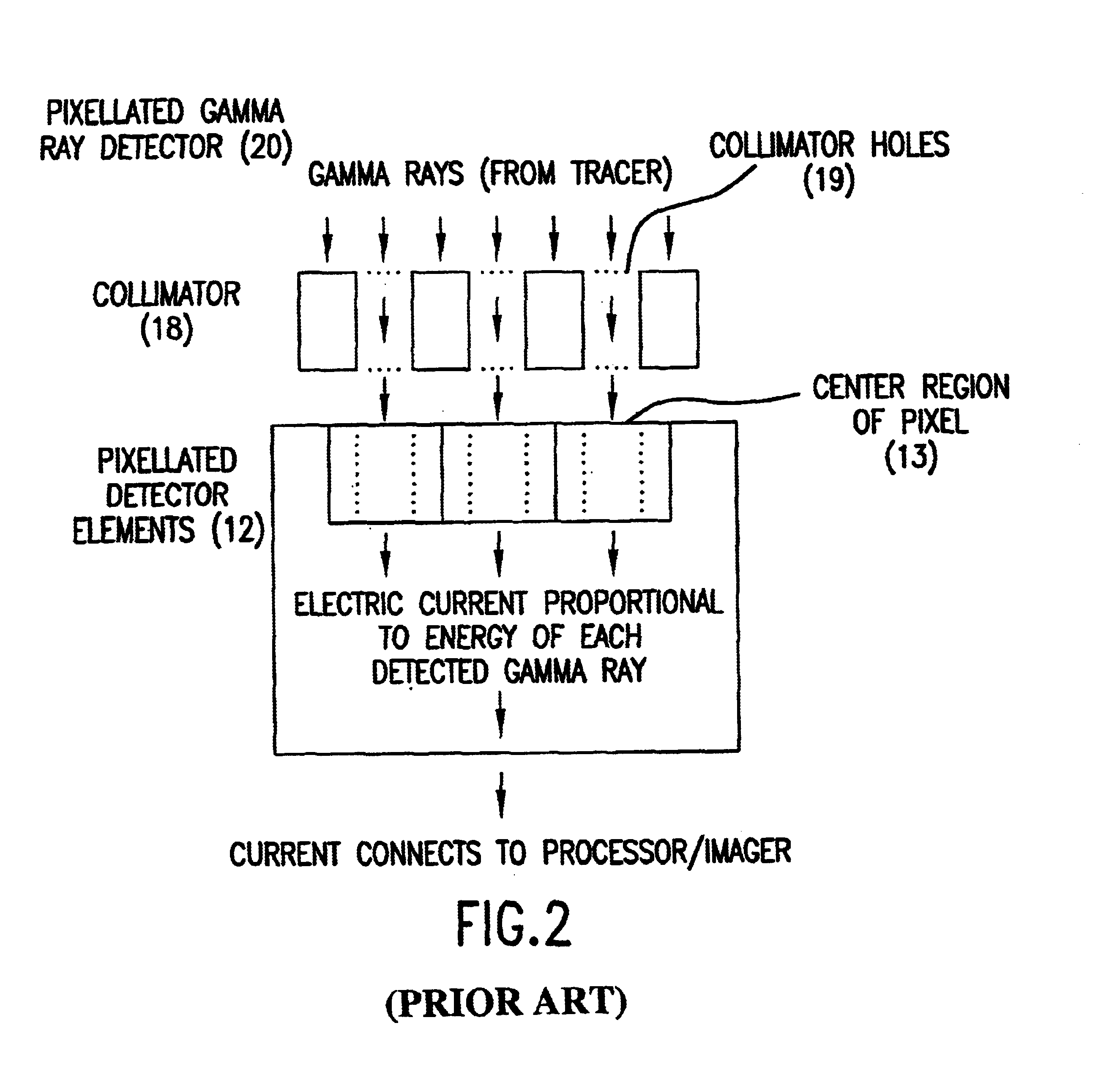High resolution, multiple detector tomographic radionuclide imaging based upon separated radiation detection elements
a radionuclide imaging and radiation detection technology, applied in tomography, diaphragm/collimeter handling, instruments, etc., can solve the problems of reducing the spatial resolution advantage of using multiple collimator holes, reducing the design complexity of the radionuclide imager, and reducing the density of the collimator hole packing
- Summary
- Abstract
- Description
- Claims
- Application Information
AI Technical Summary
Benefits of technology
Problems solved by technology
Method used
Image
Examples
Embodiment Construction
The present invention provides an improved radionuclide imaging device having multiple radiation detectors for scanning three-dimensional targets. The present invention's radionuclide imager generally uses Single Photon Emission Computed Tomography (hereafter “SPECT”) by rotating each detector around the target. In SPECT, the radiation detectors are rotated around the scanned subject to detect and count photon emissions from the radioactive tracer. When the detectors rotate around the scanned object, a lateral axis is defined as the mechanical axis of rotation aligned with a computer matrix for reconstructing the SPECT images. The radionuclide imager then uses the count value obtained by the rotating detectors to reconstruct the distribution of the radioactive tracer in the form of a cross-section image. The rotating detectors may be longitudinally moved relative to the scanned object in order to obtain multiple cross-section images. The multiple cross-section images may then be com...
PUM
 Login to View More
Login to View More Abstract
Description
Claims
Application Information
 Login to View More
Login to View More - R&D
- Intellectual Property
- Life Sciences
- Materials
- Tech Scout
- Unparalleled Data Quality
- Higher Quality Content
- 60% Fewer Hallucinations
Browse by: Latest US Patents, China's latest patents, Technical Efficacy Thesaurus, Application Domain, Technology Topic, Popular Technical Reports.
© 2025 PatSnap. All rights reserved.Legal|Privacy policy|Modern Slavery Act Transparency Statement|Sitemap|About US| Contact US: help@patsnap.com



